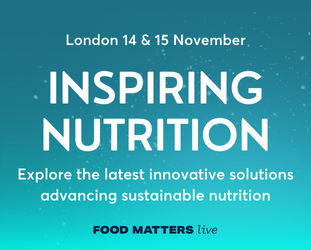WHO releases updated guidelines to restrict marketing of certain foods to children

The World Health Organisation (WHO) has published an updated set of nutritional criteria which aims to restrict marketing of certain foods high in fat, sugar and salt (HFSS) to children.
The WHO/Europe Nutrient Profile Model (NPM) can be used by governments to develop policies that will improve the nutritional quality of diets and promote the consumption of healthier foods, the agency says.
According to the organisation, in 46 of the 53 countries within the WHO European Region, more than half of the population and 1 in 3 children are overweight or living with obesity. The latest edition of the NPM hopes to tackle the growing issue of childhood obesity with its new guidelines.
“We have many food and beverage brands that promote their unhealthy products to children. We see self-regulatory approaches in many countries, which have been shown to be inefficient in protecting children from being exposing to this type of marketing,” said Dr Kremlin Wickramasinghe, ad interim Head of the WHO European Office for the Prevention and Control of Noncommunicable Diseases (NCD Office).
“So, we have developed a set of nutritional criteria to determine whether food products are suitable to be marketed to children and adolescents. Decision-makers can use this model as a guide to shape policies, improve the food environment and protect children’s health.”
The 2023 NPM is an updated version of the model first published in 2015. One major difference between the two is that in the latest edition, all categories have been assigned nutrient thresholds. According to the document, “at least a few foods in all categories can be marketed to children if their content of fat, saturated fat, sugars and sodium is low enough.”
The latest edition of the NPM includes two new categories: ‘Savoury plant-based foods/meat analogues’ and “Plant-based milk drinks’, due to the increasing market and consumption these products. The WHO guidelines recommend that like the others, these categories must adhere to specific thresholds to be advertised to kids. While savoury plant-based foods and meat analogues must contain no more than 17g total fat and 0.5g of sodium, plant-based milks must have a maximum of 3g total fat and cannot contain any added sugars nor non-sugar sweeteners.
The updated model also includes food products which in their 2015 guidelines, the WHO deemed unsuitable to be advertised to children, such as chocolate and sugar confectionary, and cakes and sweet biscuits. In the new document, in order to be suitable for children and adolescent marketing, chocolate and sugar confectionary cannot contain more than 3g total fat and must not have any added sugars, but can contain non-sugar sweeteners that are permitted for use by the Codex Alimentarius Commission. Some of these include Aspartame, Erythritol, Saccharins, Sucralose, Xylitol and Steviol glycosides. Cakes and sweet biscuits can also contain the permitted non-sugar sweeteners but mustn’t contain any added sugars and no more than 3g total fat and 0.1g of sodium.
Changes have been made to other categories that children consume regularly, such as breakfast cereals, yoghurts, sour milk and cream, and fresh or dried pasta, rice and grains. While the total fat content permitted has increased for all three categories since 2015, the amount of permitted total sugars in breakfast cereals has been reduced from 15g to 12.5g, and the total amount of sodium allowed has gone down from 0.64g to 0.5g. In the yoghurts category however, the sodium threshold has gone up from 0.08g to 0.1g, and the maximum grams of total sugars allowed has been increased from 10g to 12.5g. The total sugars threshold in pasta, rice and grains has also been brought up from 10g to 12.5g, while the total sodium level has increased from 0.48g to 0.5g.
Thresholds have been tightened in other categories such as processed meat, where the total fat permitted has been reduced from 20g to 17g, and the amount of sodium allowed has gone down from 0.68g to 0.5g.
In comparison to the 2015 model, the 2023 NPM provides thresholds for sodium rather than salt. The earlier model gave thresholds for salt, with 1g of sodium being equivalent to 2.5g of salt.
The current WHO recommendations state that total fat should make up 30% of a child’s total daily energy intake, while free sugars and saturated fat should make up no more than 10% respectively. Sodium intake should also be limited to no more than 2g a day.
The updated version of the NPM was developed together with Professor Mike Rayner from the University of Oxford, and with the support of experts from the Best-ReMaP Joint Action of the European Union.









